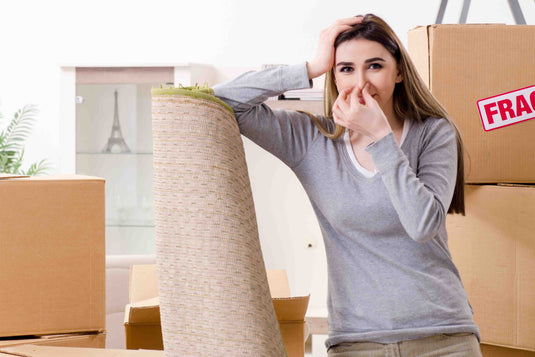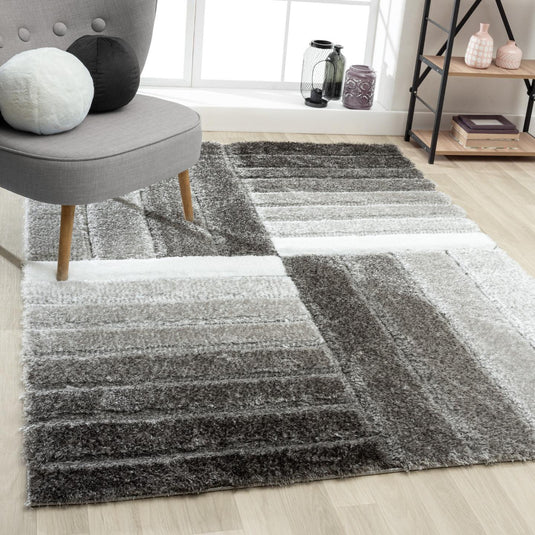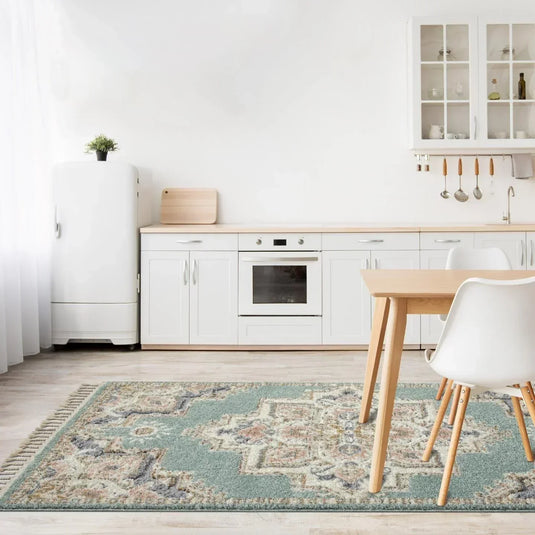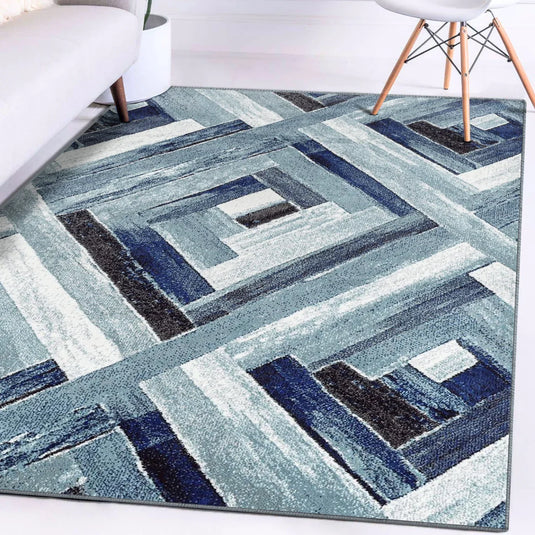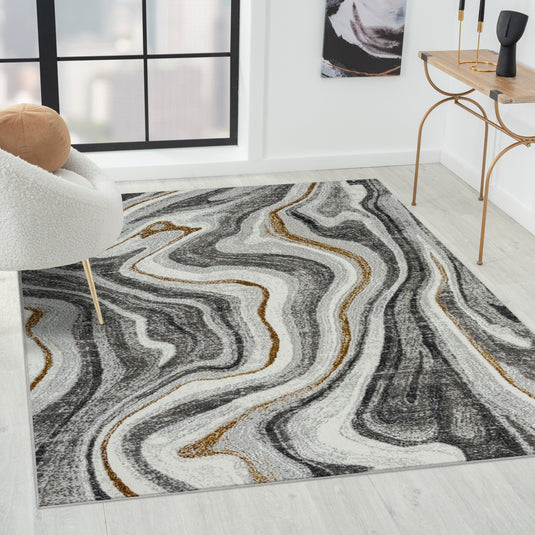An area rug often serves as the unsung hero of home décor, quietly defining spaces while adding warmth and texture. However, like any cherished home item, there comes a time when an area rug's glory days are behind it, and it's ready to be retired. Recognizing the signs that it's time for a new rug can save you from a décor faux pas and ensure your living space remains as inviting and stylish as you intend it to be. Here are five unmistakable signs that it's time to update your area rug, along with some additional insights to help you navigate the lifespan of these essential home accents.
-
Persistent Stains That Won't Go Away

Despite the most vigilant care, area rugs are vulnerable to spills and stains that can mar their appearance over time. In a bustling household, accidents are bound to happen, and while some stains can be treated with immediate cleaning, others prove to be stubbornly resistant to all efforts. Wine, coffee spills, ink, and pet accidents are notorious for leaving lasting marks that diminish the aesthetic appeal of your rug and can affect the overall look of your room. When your rug begins to resemble a mosaic of stain-removal attempts rather than a cohesive design element, it becomes clear that replacement is the most viable option to restore the beauty and hygiene of your space.
-
Visible Wear and Tear

Area rugs situated in high-traffic zones of your home bear the brunt of daily life, resulting in visible wear and tear. Common signs of deterioration include frayed edges, bald spots where the fibers have been worn down, or even tears in the fabric from heavy use or accidents. These imperfections not only detract from the visual appeal of your rug but also pose potential safety risks, such as tripping hazards. An area rug showing extensive signs of wear is a candidate for replacement, not only to uplift your home's aesthetic but also to ensure the safety and comfort of its inhabitants.
-
Unpleasant Odors

Over time, area rugs can absorb and retain odors from various sources, such as pets, smoking, cooking, and moisture, particularly in environments with high humidity. These odors can become deeply embedded within the fibers, resisting even the most thorough cleaning efforts. Persistent unpleasant smells can contribute to an uncomfortable living environment, potentially affecting the health and well-being of your family. When a rug continues to emit foul odors despite cleaning, it's time for a replacement.
-
Depleted Rug or Rug Padding

The cushioning provided by a rug pad is essential for comfort and can significantly extend the life of your rug by protecting it from direct contact with hard floors. However, over time, rug pads can lose their resilience, becoming compressed or breaking down, which affects the feel and appearance of your rug. Signs of depleted padding include unevenness, noticeable thinning, and a lack of softness underfoot. Replacing the rug pad—or the rug itself if it has become uneven or uncomfortable—can rejuvenate the look and feel of your space, bringing back the plushness and support that contribute to a cozy and welcoming home.
-
Outdated Style
Interior design trends are ever-evolving, and what was fashionable a few years ago may not align with current styles or your personal aesthetic preferences today. An area rug that once served as a centerpiece for your room might now look out of place. If your area rug no longer fits with the latest decor trends or your updated style, replacing it offers an excellent opportunity to refresh your space. A new rug can serve as a focal point, tie together design elements, and reflect the current you—reinvigorating your home with a sense of renewed style and personality.
FAQs on Area Rug Care and Replacement
How Long Do Rugs Typically Last?
The lifespan of a rug depends on its material, construction, and the amount of traffic it endures, but most rugs can last between 5 to 10 years. High-quality rugs may last longer with proper care.
How Often Should You Replace a Rug?
While there's no set rule, replacing your rug every 5 to 8 years is a good benchmark. However, this can vary based on the rug's condition and your personal preference.
Can You Extend the Life of an Area Rug?
Yes, regular maintenance, including vacuuming, spot cleaning, and professional cleaning, can extend the life of your area rug. Using rug pads and rotating your rug periodically can also help distribute wear more evenly.
Is It Worth Investing in High-Quality Rugs?
Investing in high-quality rugs can be worthwhile, as they often have superior materials and craftsmanship that can withstand heavy use better than cheaper alternatives. They also add a touch of luxury and extra comfort to your home.
What Are the Best Ways to Clean Different Types of Rugs?
The best cleaning method often depends on the rug's material. Wool rugs, for example, should be vacuumed regularly and cleaned with wool-safe detergents without excess water. Synthetic rugs can be more forgiving and might be cleaned with standard carpet cleaners. Delicate area rugs, such as silk, should be professionally cleaned to avoid damage. Always refer to the manufacturer's instructions for specific care recommendations.
Can an Old Rug Be Recycled or Repurposed?
Yes, old rugs can find new life in various ways. They can be recycled, depending on the materials, at facilities that accept textile products. Repurposing ideas include turning them into smaller mats, wall hangings, or even upholstery for furniture. Creative repurposing helps reduce waste and can add a unique touch to your home decor.
How Does the Placement of a Rug Affect Its Longevity?
The placement significantly impacts a rug's longevity. Rugs in high-traffic areas, such as entryways or living rooms, will wear down faster than those in less frequented spots. Sun exposure can also fade colors over time. Consider rotating your rug or choosing a more durable rug for high-traffic zones to extend its life.
What Should You Consider When Choosing a Rug for Allergy Sufferers?
For allergy sufferers, it's important to choose rugs that don't trap allergens easily. Low-pile or flatweave rugs collect less dust, pet dander, and other allergens compared to high-pile options. Materials like wool, although natural, can hold allergens, so polypropylene rugs that are easier to clean might be a better choice. Regular cleaning and using a no-beater vacuum can also help minimize allergen accumulation.
Are Rug Pads Really Necessary?
Rug pads are very useful as they serve multiple purposes: they prevent slipping, add cushioning, protect the floor underneath, and can extend the life of your rug by reducing friction. Choosing the right pad for your rug and flooring type can enhance comfort, safety, and durability.
How Do Seasonal Changes Affect Your Rug's Condition?
Seasonal changes can affect your rug's condition in several ways. Humidity and temperature fluctuations can cause natural fiber rugs to expand or contract, potentially leading to shape distortion or increased wear. In wet seasons, rugs can be more susceptible to mold and mildew, especially if not properly ventilated. Rotating rugs or choosing seasonally appropriate rugs (lighter in summer, heavier in winter) can help mitigate these effects.
Wrapping Up
By recognizing the signs that it's time to replace your rug, you can keep your home looking its best. Whether it's due to wear, style, or functionality, a new area rug can transform your space, making it feel fresh and inviting once again.
